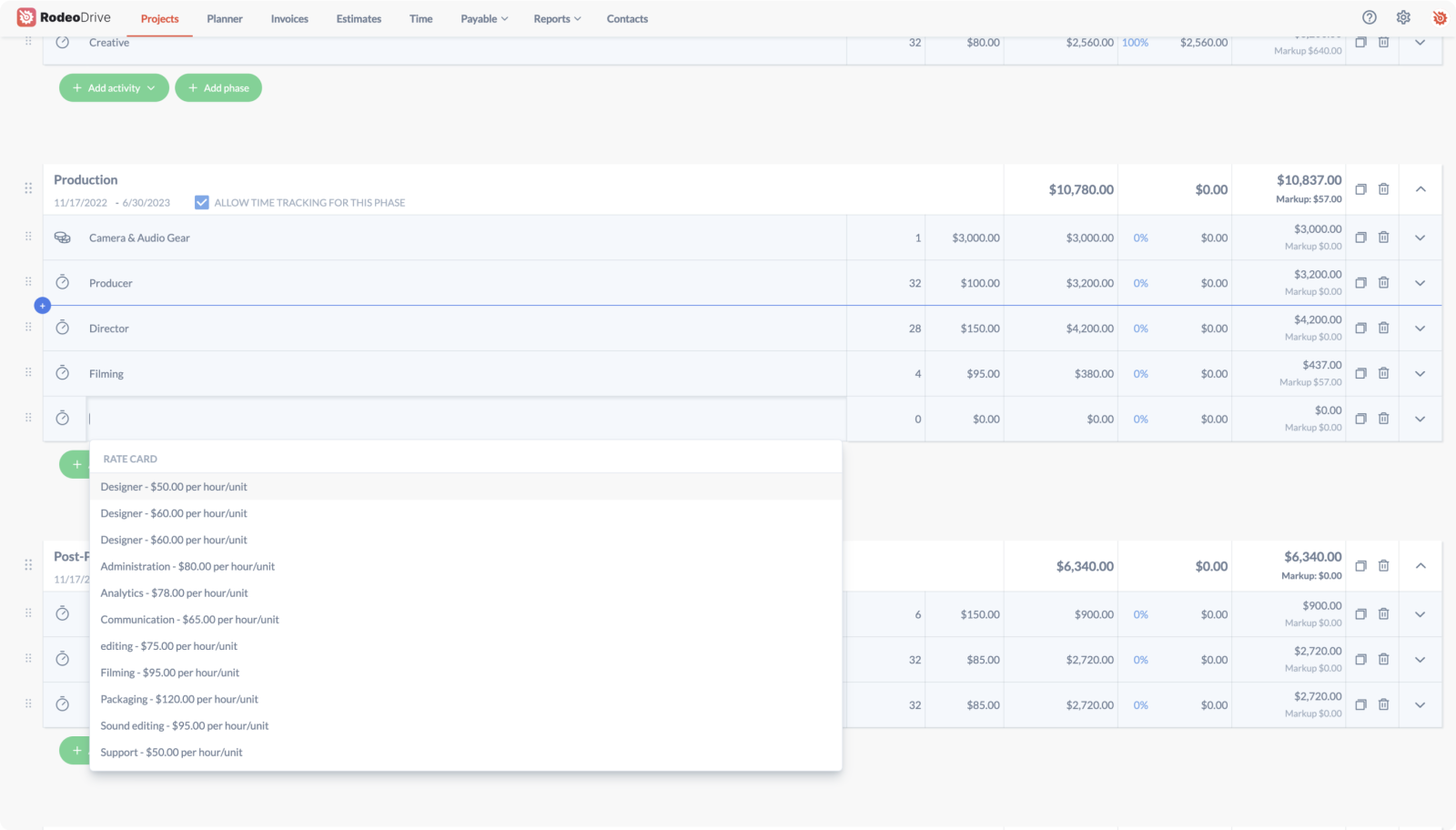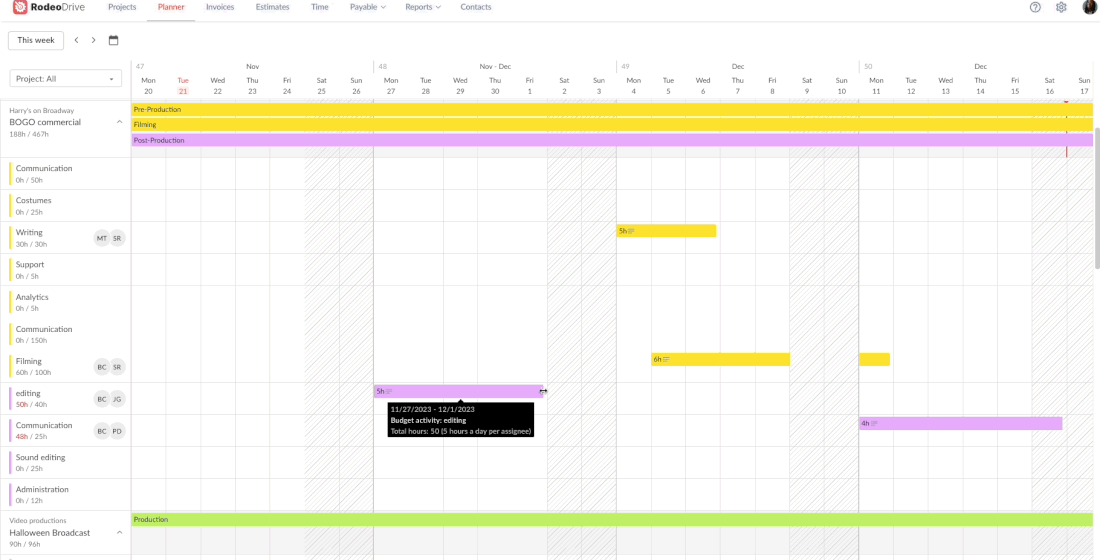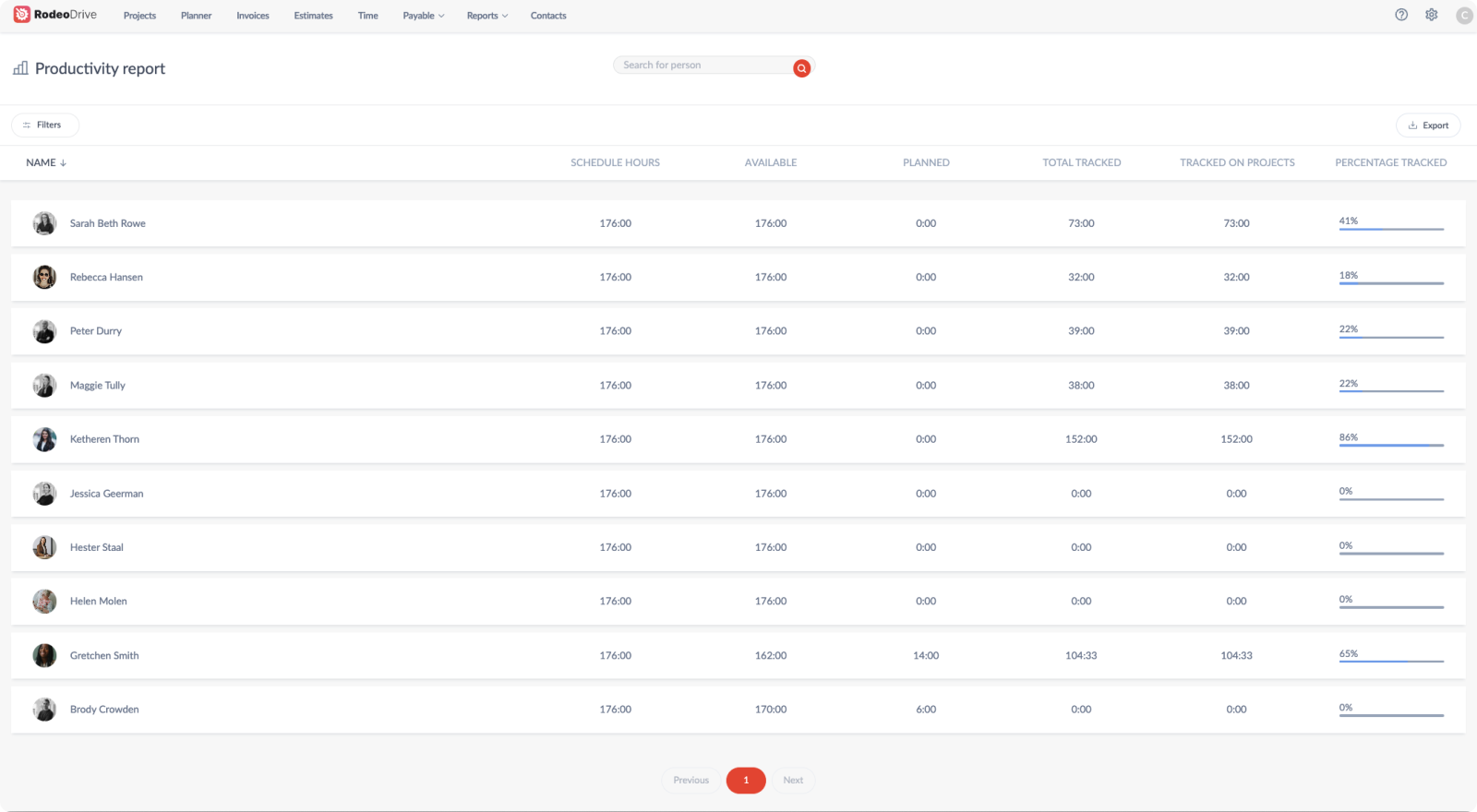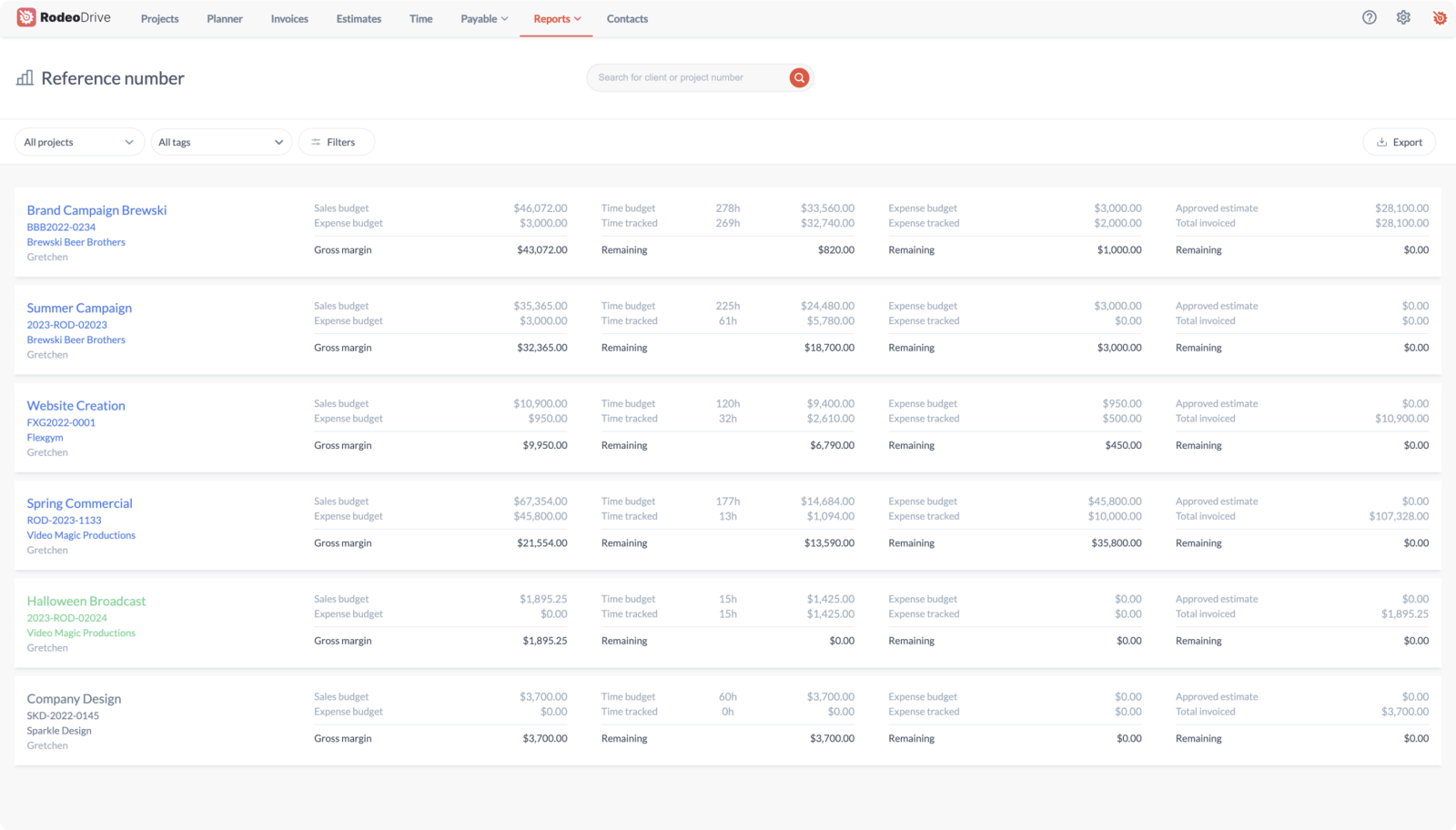Project Management Checklist: 12 Steps for Project Success
Project managers have a million different responsibilities in ensuring projects run smoothly, so it’s no surprise you might forget a few steps in the project management process every once in a while.
If you’ve experienced this, don’t worry. We’ve put together a 12-step project management checklist to make sure you never forget a thing again.
1. Conduct project research.
Before you dive into your project, it’s important to conduct research to have a better sense of what your goals, plans, and deliverables should look like.
Project research can take multiple forms. For example, you might want to look at previous projects you’ve completed to see if any of your past frameworks or methodologies can be applied to your current project. Revisiting past projects during this stage can also help you understand how you can improve upon past strategies in order to increase your likelihood of success.
Keeping up with the latest industry trends is a must for project managers. So, read up on materials such as industry reports while also putting some thought into which project management methodology is the best fit for your objectives.
Overall, the idea of this step is to help create a project vision and establish a solid foundation on which you can begin structuring your project.
Related: How to Write a Persuasive Project Proposal
2. Determine your project scope, including your goals and objectives.
Creating a project scope statement will help your team stay on track throughout the project.
Before crafting this statement, jot down the project’s boundaries, goals, expected timeline, and key activities. Since the scope involves all of the required work throughout the project’s entire lifecycle, you’ll also want to give some thought to the deliverables you expect to produce at the conclusion of the project.
It’s particularly important to clearly outline the project objectives, as these objectives will influence each project team member’s individual goals, therefore impacting the overall course of the project. Poorly set goals set an unclear project vision and make it difficult to measure progress.
Also read: Goals vs. Objectives: Is There a Difference?
.png)
Looking for more project management tips? Check out our ultimate guide to managing projects effectively.
3. Meet with project stakeholders to understand their expectations.
Having an open dialogue with project stakeholders is the best way for a project manager to ensure everyone is on the same page regarding expectations. During this discussion, you’ll want to go over the project scope, budget, deadlines, and deliverables and make sure everyone agrees.
Be sure to run your assumptions and constraints by your stakeholders as well. Assumptions include elements presumed to be true for the duration of the project, and constraints include factors with the potential to negatively impact project outcomes, like changes in scope, limited resources, and information availability.
Ensuring your project scope is agreed upon by all stakeholders is critical in avoiding scope creep. Scope creep occurs when unanticipated changes are made to the project once the project has already begun, thus altering the budget, timeline, or deliverables.
For example, stakeholders deciding to add additional features to a product ahead of its launch constitutes scope creep, since the project team now has added responsibilities that expand the project vision and impact their existing deadlines and workflows.

4. Plan out what needs to get done.
The next step on your project management checklist should be project planning. Many project managers find it easier to build a project plan in phases, as phases can help provide a structure to project tasks and activities and make it easier to track the progress of your project.
Part of this planning process should also include building your project workflows, which typically involves establishing the order of tasks necessary to produce the desired result. This entire process of creating a project plan should be done with your goals and project deliverables in mind.
If you're unsure about whether your project plan is worth executing, or if your stakeholders are unsure about the project requirements, then developing a proof of concept might also be worthwhile.
Drafting a risk management plan and a project communication plan is also important, although we’ll get into those later on in the project management checklist.
Also read: 12 Ways to Improve Team Accountability [Remote & Onsite]
5. Build a project budget.
Ideally, you’ve left your stakeholder conversation with an idea of your project budget. And, now that you’ve planned out what needs to be done, you can nail down exactly how much you expect the project to cost.
Your budget will look different depending on the nature of your project. If you’re a project manager at a marketing or creative agency, your budget might primarily consist of rate cards for your team’s time, for example.
Related: How to Create a Winning Marketing Project Plan

Easily build budgets in Rodeo Drive using rate cards for your project activities
Regardless of how you structure your budget, don’t forget to include direct and indirect costs, as both will have a large impact on your project profitability. Direct costs encompass the labor and materials you’ll need to complete the project, whereas indirect costs include things like office space or insurance – things that are widely accepted as the cost of doing business that you can’t necessarily bill the client for.
Some project management software tools offer budgeting features that can be used to speed up this process by automatically calculating the cost of your time estimates and allowing you to break your budget down into phases, activities, and tasks.
6. Allocate resources.
Resource allocation is an important step on any project management checklist. Allocating resources includes assigning people to tasks as well as deciding which software tools to invest in.
Project managers should put a lot of thought into what resources are necessary to produce the required deliverables. For example, consider which tools are crucial versus those that are just nice to have.
Allocation decisions will have a large impact on your budget, so this step must come after the project budget has been built.

Adding a new project activity to Rodeo Drive's planner
In terms of assigning tasks, consider the experience and skill sets of each project team member before assigning them to work on different parts of the project. Those with a proven track record on similar projects may be better suited to take on a leading role.
7. Create a project schedule and set milestones.
So you have an idea of what needs to get done. Now the question is: When?
An easy way to begin building a project schedule is to estimate the time it will take to complete each task and manage your team’s weekly workload using that estimation. Once the project begins, you can ensure your estimations are correct – and revise your project timeline as necessary – with the help of project management software with time tracking abilities.

Project activities can easily be rescheduled in Rodeo Drive by dragging and dropping them within your planner
Breaking your project schedule into manageable increments is another solid strategy. This could mean setting quarterly milestones for yearlong projects or setting weekly objectives and milestones for those with a duration of just a few months.
Also read: Time Tracking Best Practices & Tips According to Experts
8. Develop a risk management plan.
Projects often don’t go according to plan, which makes it crucial to conduct a risk assessment before kicking off the project. Creating a plan for risk management allows you to overcome risks more effectively later on.
A risk management plan should outline the biggest threats to the project's success, the likelihood of those risks, and how you will mitigate them, should they occur.
Your plan should also account for the varying degrees of risk among possible roadblocks. For example, a risk that results in wasted money isn’t ideal, but it’s less likely to interfere with your project’s success.
Consider how internal risks like employee turnover could impact the project, and create a takeover plan if you’re already aware that a team member will be leaving midway through the project.
9. Build a project communication plan.
Creating a communication plan is an incredibly important part of project success that’s often overlooked. Without a communication plan, there’s no guarantee that messages will be properly distributed, received, and understood by the necessary stakeholders during the project.
By creating a documented plan outlining the communication channels, style, and schedule you intend to follow, all parties will be on the same page regarding when and where they can expect updates on the project's progress.
This communication plan will also help your team understand how often you’ll be having check-in meetings, and whether your daily communications will occur via email or an instant messaging tool.

10. Determine your processes for documentation.
Project documentation is a super important piece of the puzzle for teams answering to outside stakeholders or clients who will want to know why a project didn’t go exactly as planned. It’s best to collect documentation as the project progresses rather than scrambling to find documents at the end when questions arise.
This is where investing in a project management software tool is incredibly beneficial. With all of your tasks, tracked time, estimates, invoices, and purchase orders stored in one place, you can easily provide proof of hours worked should you need to back up a client invoice with additional details.
Related: Product Manager vs. Project Manager: Understanding the Differences
11. Monitor your project progress.
Monitoring is a crucial step on any project management checklist. Keeping tabs on your project progress along the way is the best way to know if you need to make adjustments or change course entirely if your team’s progress is not meeting expectations.
For many project managers, monitoring projects is more than just making sure employees complete their tasks on time. Rather, they also have to make sure finances are kept under control and that stakeholder expectations are met.
Many project management tools are built with reporting features that make it easier to monitor project progress. Reports allow you to see employee productivity, how many hours your team has tracked toward a project, and how close a project is to completion.

Your Rodeo Drive Productivity report provides insights into your team's total logged and billable hours
On top of this, you won’t be able to provide relevant project updates to stakeholders unless you’re in the know about where your project is up to.
Related: 6 Ways To Leverage Data with Real-Time Reporting
12. Assess your success.
The final step on our project management checklist is to assess your success when the project comes to a close.
Once a project is finished, it’s critical to assess whether it was a successful project. Success can be measured in several ways, including whether you followed your project schedule, were under the project budget, or if your deliverables were high quality.
Project management reports are also useful at this stage because, for example, analyzing reports on your closed projects will help you better understand your project’s profit margin.

Rodeo Drive's Projects report shows your financial performance metrics, such as gross margin
Taking the time to reflect on your shortcomings at the end of your project is crucial. Don’t forget to collect feedback from your team on your project performance. After all, nobody’s perfect, and feedback is what will allow you to do better next time.
Also read: 9 Tips to Help Improve Your Project Management Skills
Takeaway
Project management is no small undertaking. That said, it becomes a lot more doable when you’re properly prepared, especially when you have a project management checklist to guide you.
Investing time into the project management process is one of the best ways to increase the likelihood of a project's success. And don’t forget to use your resources wisely – investing in a quality project management tool can make your life so much easier by centralizing all of your project information.
When using Rodeo Drive, project managers are able to tackle each step of this project management checklist in an easy and efficient way.
Creating and allocating a project budget, planning activities, and monitoring progress – including financial status – can be hectic if you don’t have the right tools. That’s why Rodeo Drive offers features to cover every step of a project in one place.
Try it for free and see how Rodeo Drive can help your team.







